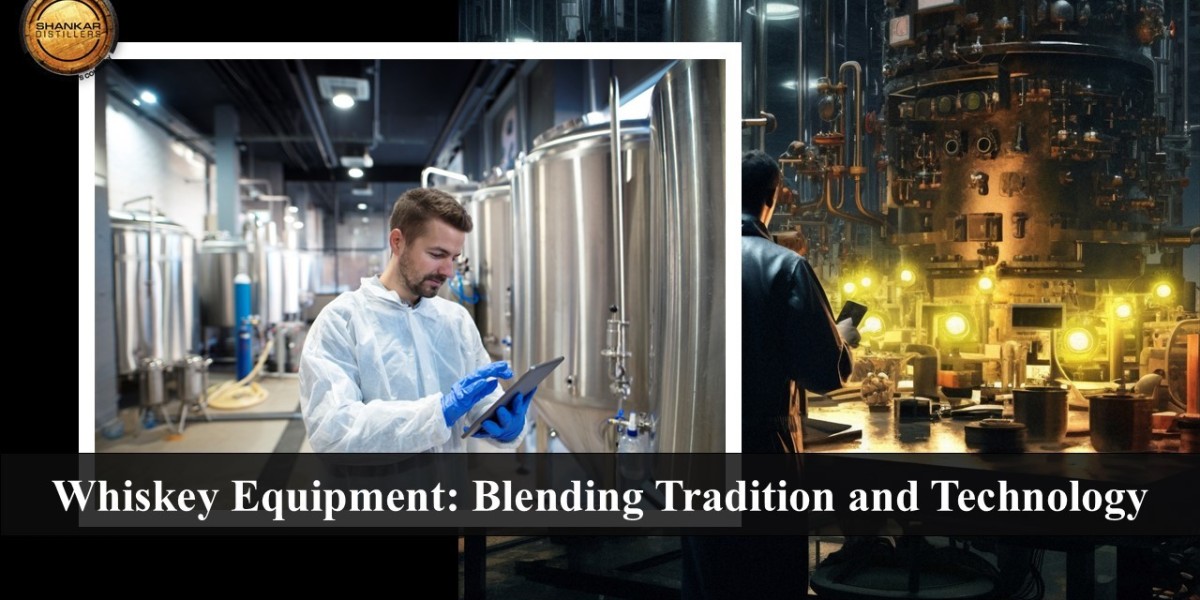The whiskey industry has witnessed a remarkable transformation over the centuries. From the rustic pot stills of yesteryears to modern-day automated systems, distillers have embraced technology to improve efficiency and quality. However, this evolution raises a crucial question: How do whiskey makers incorporate cutting-edge technology while preserving the authenticity of traditional craft? For Whiskey Distillers USA, maintaining this delicate balance ensures that the essence of whiskey remains intact. From straight bourbon whiskey to straight rye whiskey, the art of whiskey making continues to honor its roots while benefitting from technological advancements.
The Traditional Roots of Whiskey Equipment
For centuries, whiskey production relied on handcrafted tools and techniques. Early distillers primarily used copper pot stills, wooden fermentation tanks, and open-flame heating methods. These manual processes required immense skill, patience, and a deep understanding of the craft. Every step, from fermentation to distillation, demanded the careful eye of an experienced distiller to ensure consistency in quality and flavor.
The beauty of traditional equipment lies in its ability to allow small variations that contribute to the uniqueness of each batch. Distillers valued imperfections, considering them an essential part of creating a whiskey that carried a distinct character and identity.
How Modern Technology Has Enhanced Whiskey Production
While traditional methods hold cultural and historical value, modern technology has streamlined the whiskey-making process without sacrificing quality. Today, distilleries use sophisticated equipment to achieve consistency, precision, and sustainability.
- Advanced Distillation Systems
Modern column stills and hybrid pot stills have revolutionized the distillation process. While traditional copper pot stills remain a hallmark of craft whiskey, newer equipment allows for larger production volumes and greater control over the final product. For example, automated temperature and pressure controls help distillers achieve specific flavor profiles with remarkable accuracy.
- Computerized Fermentation Monitoring
Fermentation is a critical stage in whiskey production, where yeast converts sugars into alcohol. In the past, monitoring fermentation was a manual process prone to fluctuations. Today, advanced sensors and software can track pH levels, temperature, and fermentation times in real-time. This ensures that the process remains consistent, resulting in whiskey with reliable quality and flavor.
- Precision Aging with Innovative Barrels
Aging whiskey in oak barrels is essential for developing its rich flavors. While the tradition of using charred oak barrels remains unchanged, modern innovations have introduced techniques to optimize aging. Some distillers use temperature-controlled warehouses and digital tracking systems to monitor the whiskey's interaction with the wood. This allows producers to understand how environmental factors influence the maturation process.
- Sustainability and Eco-Friendly Practices
Technology has also helped whiskey makers adopt eco-friendly solutions to reduce waste and energy consumption. From water recycling systems to solar-powered distilleries, the industry is striving to make whiskey production sustainable. Such innovations align with modern consumer preferences while preserving the legacy of craft whiskey production.
Balancing Technology and Tradition
Despite technological advancements, distillers remain deeply committed to the traditional principles that define whiskey's authenticity. While machines can enhance precision, the artistry of whiskey making still depends on human intuition and experience.
For distillers producing straight bourbon whiskey or straight rye whiskey, technology serves as a tool to enhance—rather than replace—the human touch. The nuanced flavors and aromas of these premium whiskeys are achieved through a blend of advanced equipment and time-honored techniques passed down through generations.
Preserving Handcrafted Techniques
Craft distillers often combine modern equipment with traditional methods. For example:
- Using computerized monitoring for fermentation but relying on experienced distillers to make final adjustments.
- Leveraging automated bottling processes while hand-labeling bottles to maintain a personal touch.
- Allowing natural variations in wood grains to influence barrel aging, keeping each batch unique.
By embracing technology without abandoning tradition, distillers create whiskey that satisfies both purists and modern enthusiasts.
The Future of Whiskey Production
The whiskey industry continues to evolve as technology advances. Innovations such as artificial intelligence, robotics, and blockchain tracking are shaping the future of whiskey production. However, the essence of whiskey—its craftsmanship, heritage, and authenticity—will remain central to its identity.
Companies like Shankar Distillers - Premium Whiskey Company in USA showcase how the industry can leverage innovation while staying true to the roots of whiskey making. Whether it's producing straight bourbon whiskey or straight rye whiskey, distillers recognize that technology is a means to enhance quality, not replace tradition.
Conclusion
The evolution of whiskey equipment demonstrates how distillers have successfully integrated technology while preserving their craft's authenticity. Modern advancements enable efficiency, consistency, and sustainability, yet the art of whiskey making still thrives on tradition, skill, and human experience. By striking this balance, whiskey makers continue to produce exceptional spirits that honor their rich heritage while meeting the demands of a modern world.
As whiskey enthusiasts savor a glass of straight bourbon whiskey or straight rye whiskey, they can trust that each sip represents a perfect harmony of innovation and tradition - a true testament to the timeless craft of distillation.
Useful Links



